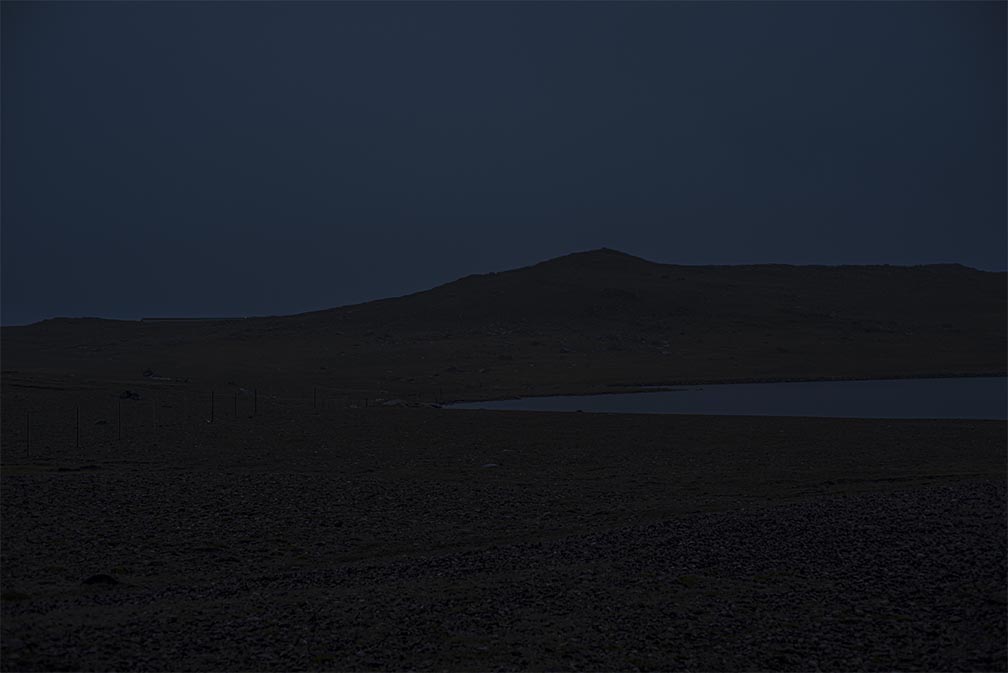This a series of nightlandscape photographs taken in Greenland.
Most are made at night, often with long exposures, ranging from an hour or two. This creates strange and eerie light that seems otherworldly. I’m very interested in the intersection of beauty, light, and tracing epic shifting landscapes, and I am drawn to uninhabited places revealing evidence of change. My goal is to present a portrait of dramatic shifts in the land and convey a feeling of loss and mystery focused on the tragic changing environment and the isolated but beautiful, immense primordial landscapes.
The arctic at night is quite terrifying. Yet is also meditative, standing silently in the beauty, as if disappearing in the space, being crushed and expanding at the same time. My working process is very intuitive. In the extreme dark, I usually am unable to see what is in the camera’s viewfinder and instead stand beside the camera “feeling” the image and framing it in the night. Only later do I discover what I’ve photographed. This process of revelation is a key element of the work.
Artistic inspiration comes from history, painting, cinema, and photography. I think of Atget’s transforming Paris, the eerie night scenes of Brassai, Hudson River Landscape painters–Frederic Edwin Church, films by Antonioni, and even films my father would bring home and play in our darkened basement.
This trip, sponsored by a grant from the American-Scandinavian Foundation and Roth Foundation, allowed me to spend a month working. It’s amazing to think how remote this is. There are no roads connecting towns; just boats, airtravel. About 50,000 people, or the number of people living in StuyTown, are spread across two thousand miles.
For the printing process, I usually make about three thousand images, which are edited down to a portfolio. Because of the long exposures, I might need to make many dozens of color corrections in Photoshop, including retouching, sharpening, masks, and removing noise. The prints are intentionally dark but reveal rich, subtle detail. This mirrors my initial experience when standing at night as my eyes adjust to the scene. The sizes are 20×24”, or 40×50”, edition of five. I’m currently working on a book.
This represents a continuation of several funded environmentally-related projects.
Starting initially at Yaddo; Wyoming in Ucross; to France, documenting changes near the Pyrenees, being a Fulbright Alternate for Canada; this is from Michigan; to Greenland capturing melting ice–all at night.
For my second trip, also sponsored by American-Scandinavian Foundation, I’ll head to the even more remote East Greenland, the site of one of the fastest melting glaciers in the world, retreating at about an inch an hour. I hope to engage with local Greenlanders who will help identify specific points of change in the land.
I want to crystallize this feeling that land is exposed through the melting ice, there is a cultural element being unearthed too. I want to capture the immensity of the space and photograph this feeling of loss and discovery.
Since climate statistics are often hard to really comprehend, I hope beautiful photographs of real-world transformations will bring recognition to people outside art galleries. I find tracing epic change a once-in-a-lifetime chance and I feel it is urgent to continue it changes further.





Comments are closed.